Iowa naturalist Eileen Miller has graciously contributed more of her photographs and commentary for this week’s wildflower diary. Today’s featured plant is Partridge pea (Chamaecrista fasciculata). In the pictures after the jump, you can see the bright yellow flowers and frequent pollinators in incredible detail. For central Iowans who want to get a closer look at this plant, lots of partridge pea are blooming near the south edge of Gray’s Lake in Des Moines, and along the Meredith bike trail nearby.
Until I read Eileen’s text, I never knew that partridge pea plants produce nectar outside the flowers.
This post is also an open thread: all topics welcome.
PARTRIDGE PEA (Chamaecrista fasciculata)
Family–Fabaceae (Leguminosae)
by Eileen Miller
It’s always a joy to see the showy yellow flowers of Partridge Pea blooming from July through September. This native prairie annual wildflower has a number of interesting features. Its delicate leaves are pinnately compound, with 12 or more pairs of leaflets that fold along a midrib when touched. They also fold up at night and reopen in the morning.
The rather large yellow flowers have 5 unequal petals. In the center is a thin lime green pistil and 10 stamens, 6 of which are dark purple and 4 of which are yellow and inconspicuous. The fruits are small, flat pods, which contain a dozen or more seeds. When mature the seed pods split open, throwing the seeds away from the plant. These seeds germinate readily.
Bumble bees, honey bees and other bee species are attracted to the flowers and serve as major pollinators.
A really unique feature of Partridge Pea is its extrafloral nectaries, disc-like structures outside the flower that produce nectar. The thinking among scientists is that the nectaries are designed to attract ants, which will crawl all over the plant and ward off other insects that might eat its tissues or suck its juices. Wasps, like the black-and-yellow mud dauber wasp, also take advantage of the extrafloral nectaries.
Partridge Pea flowers and foliage:
Bumble bee feeding on nectar and collecting pollen:
Small bee species collecting pollen:
Honey bee feeding on nectar and collecting pollen:
Ant feeding on nectar of extrafloral nectary (see small reddish disc):
Black-and-yellow Mud Dauber wasp feeding on nectar of extafloral nectary:

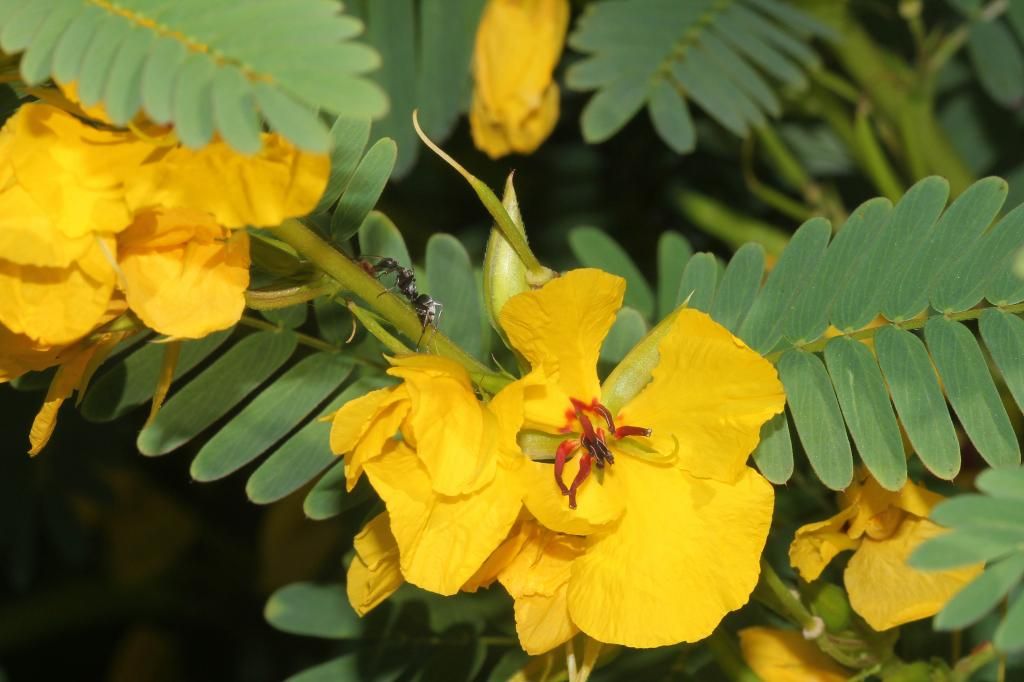
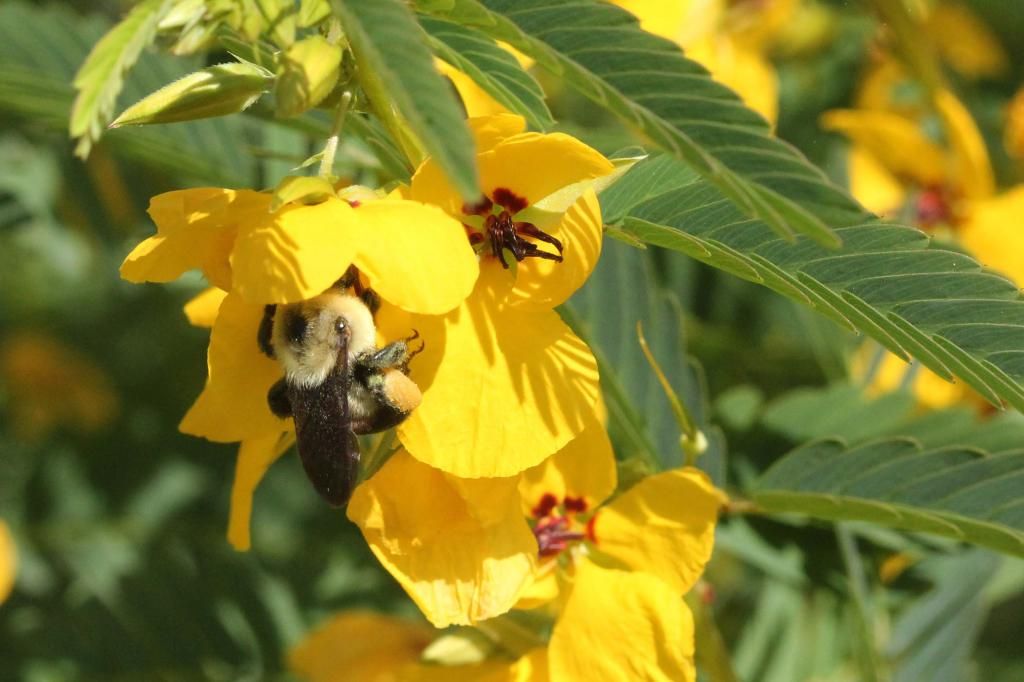
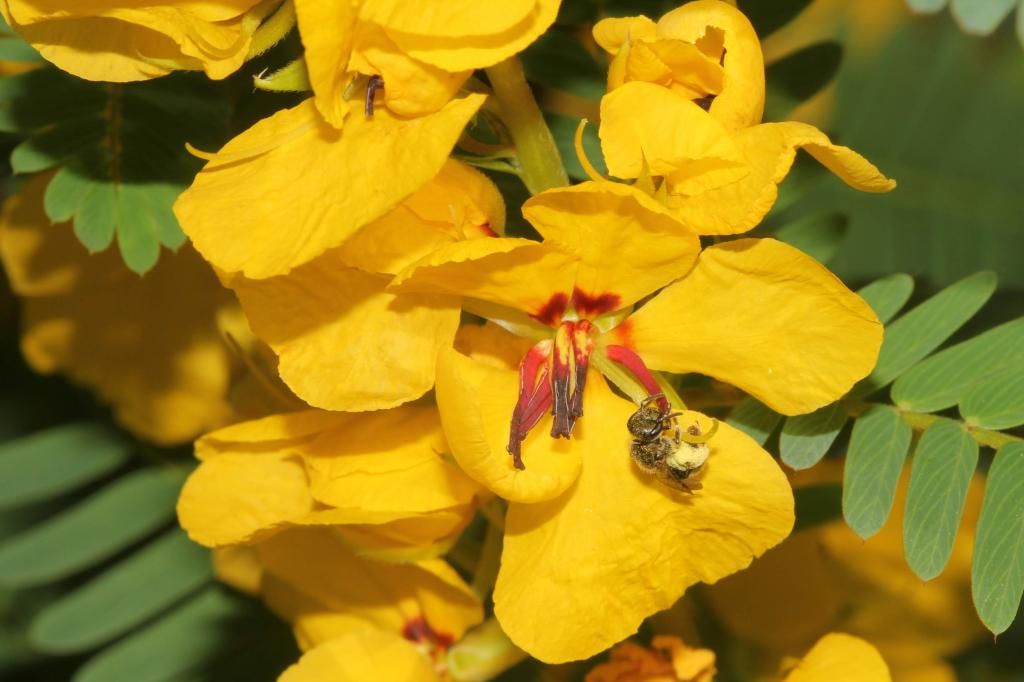
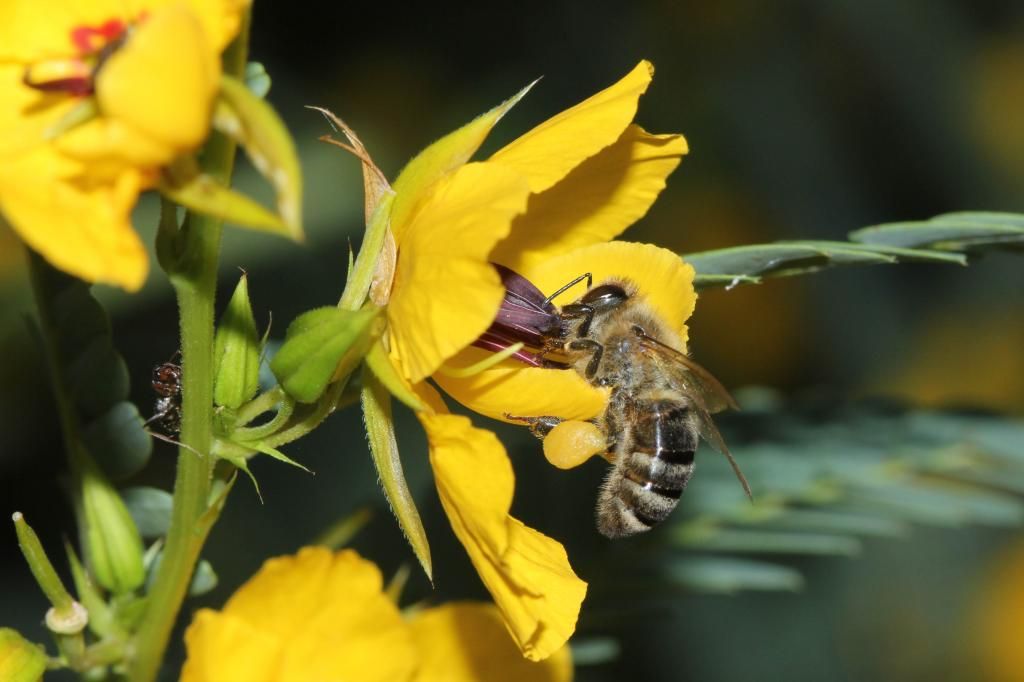
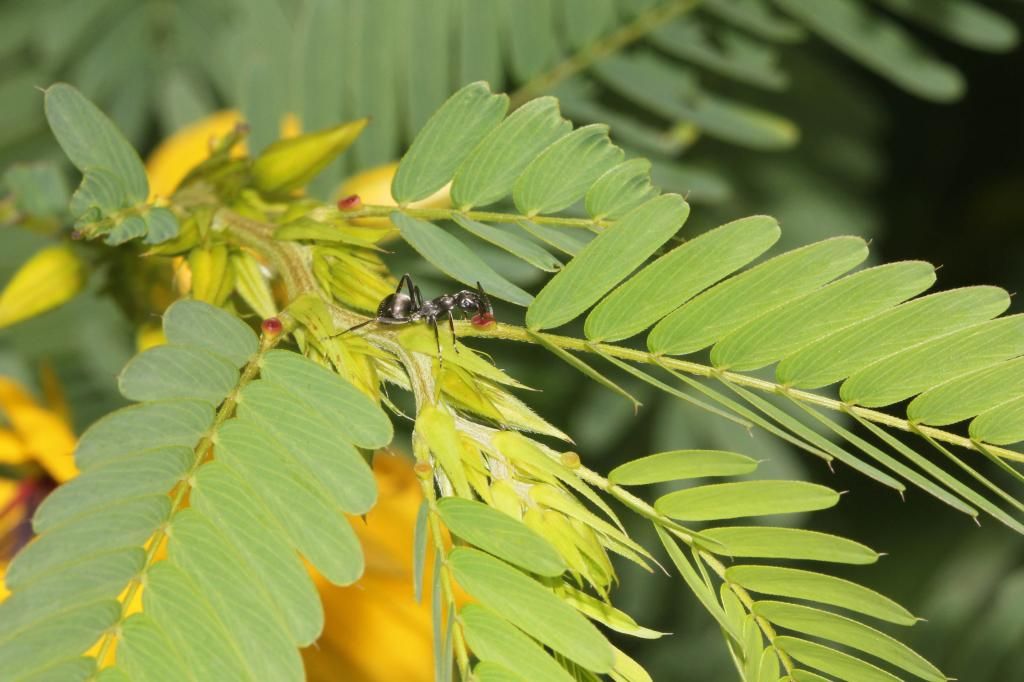
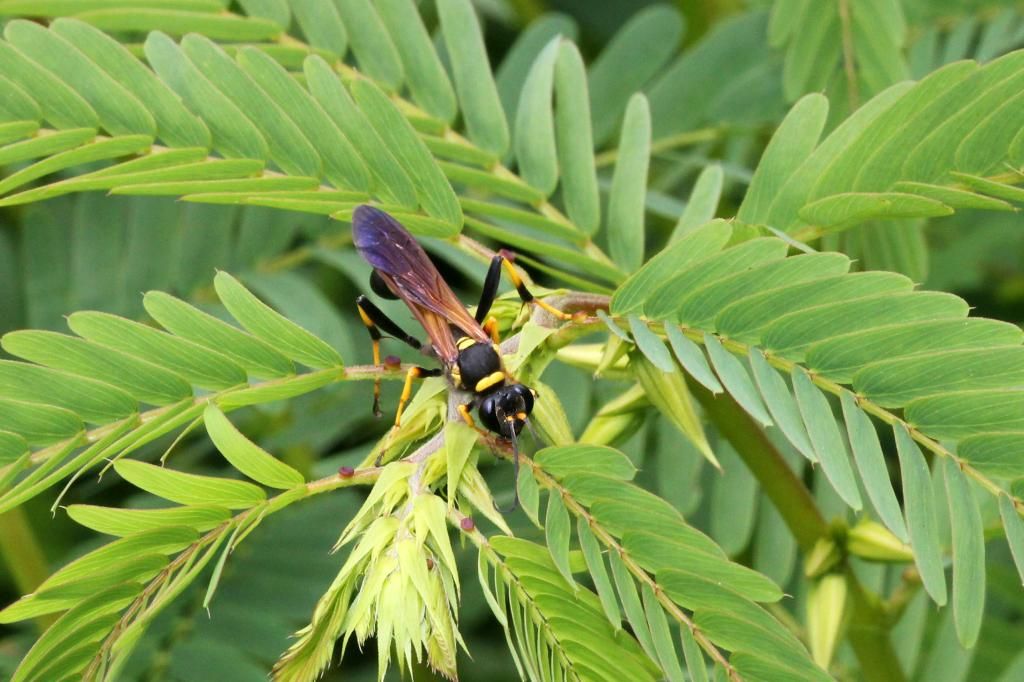
No Comments